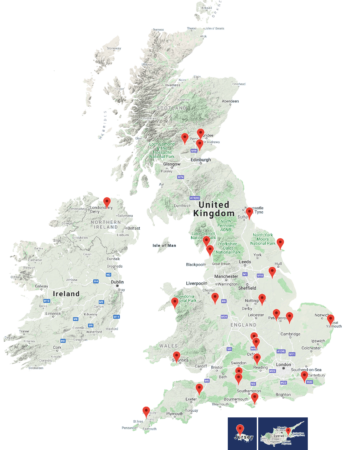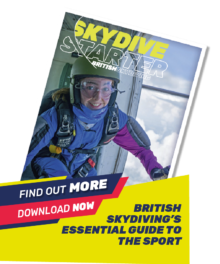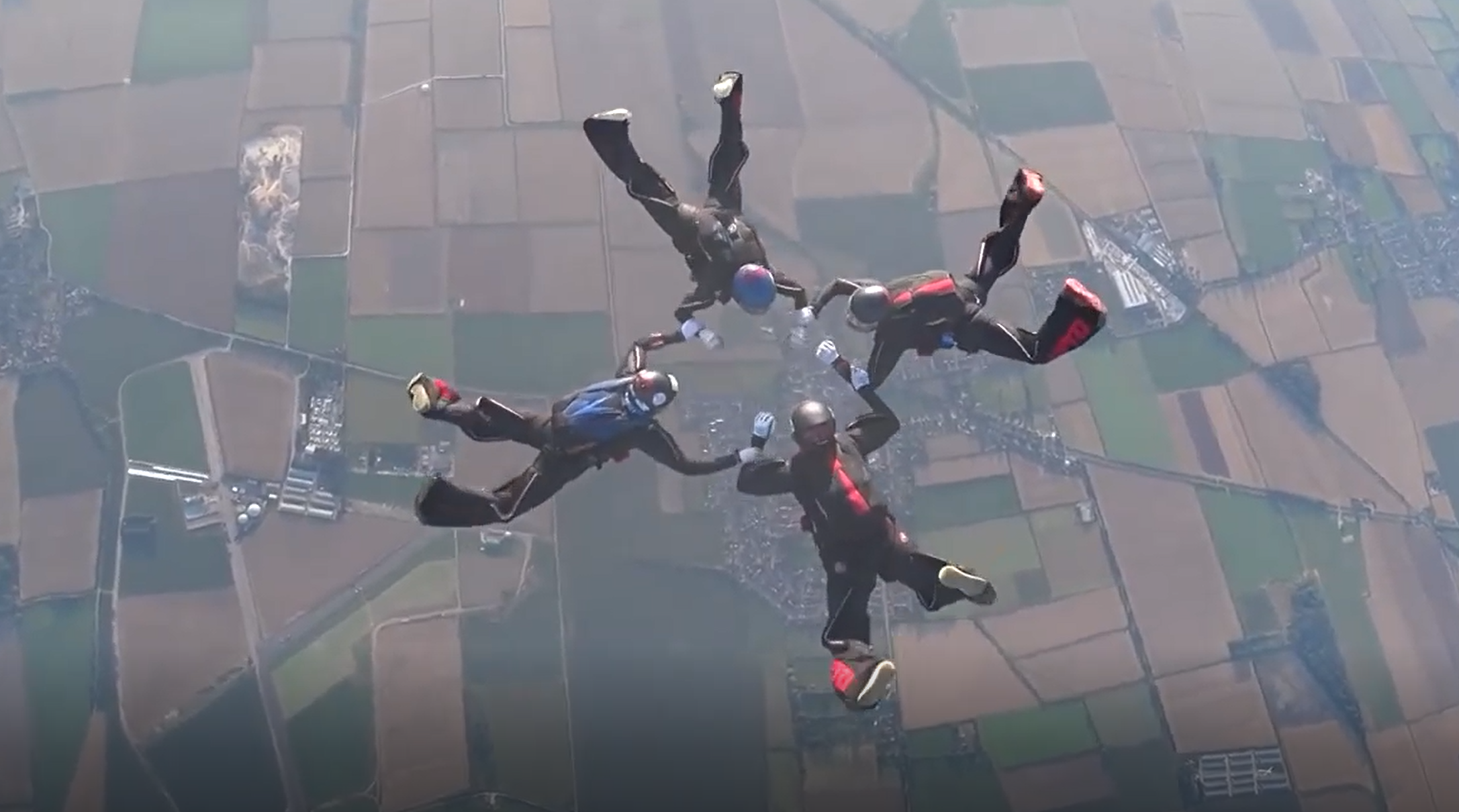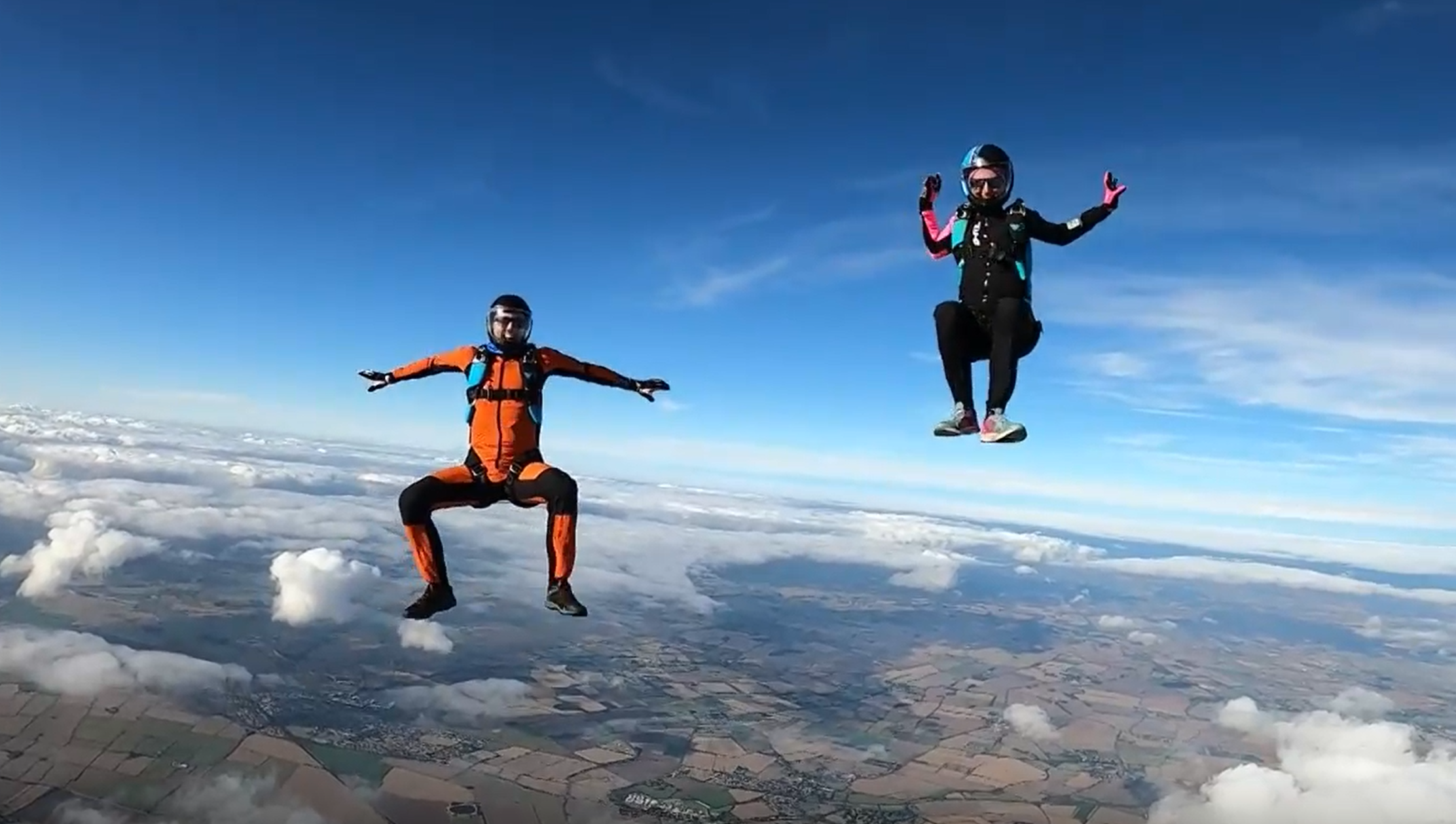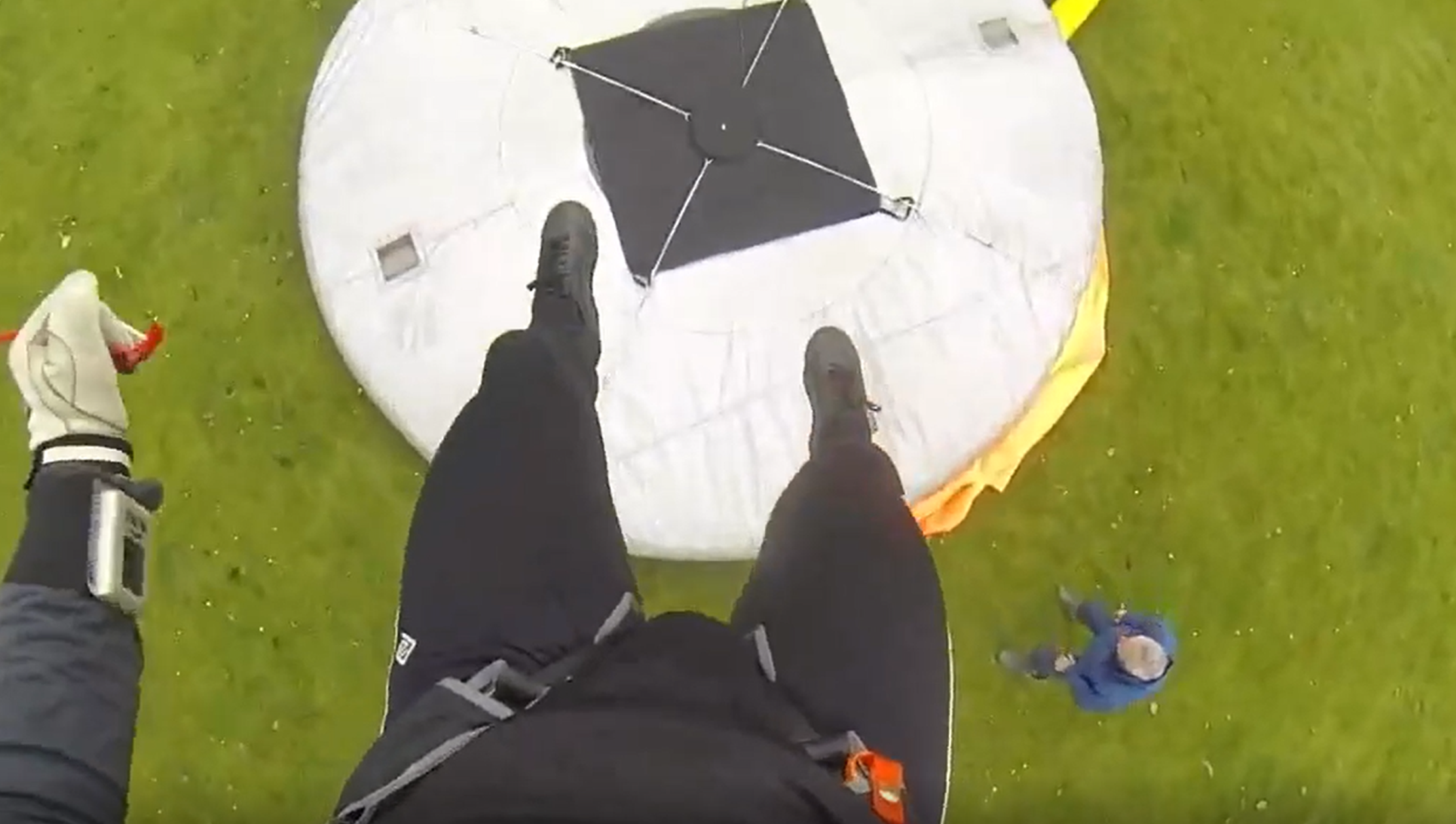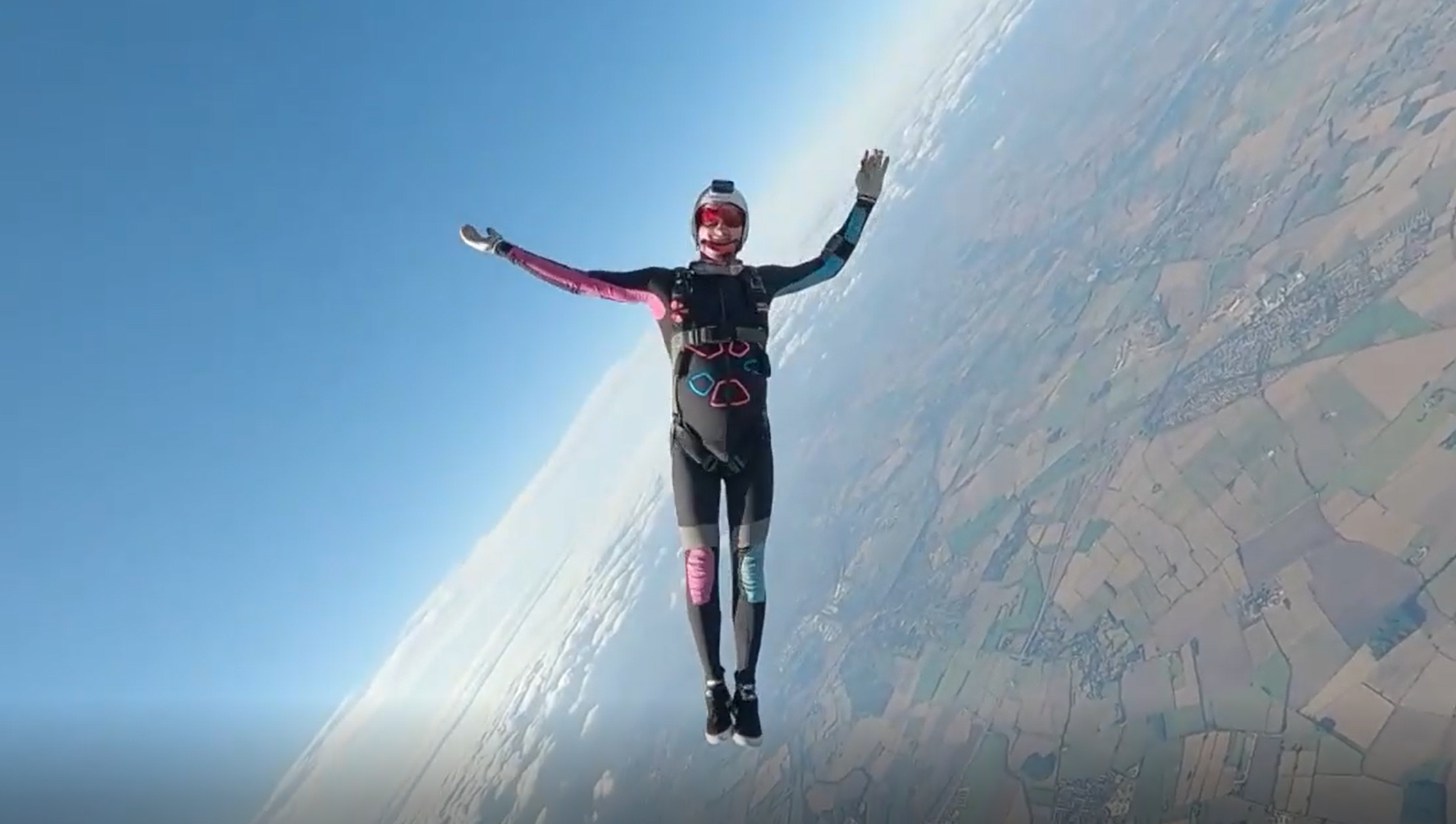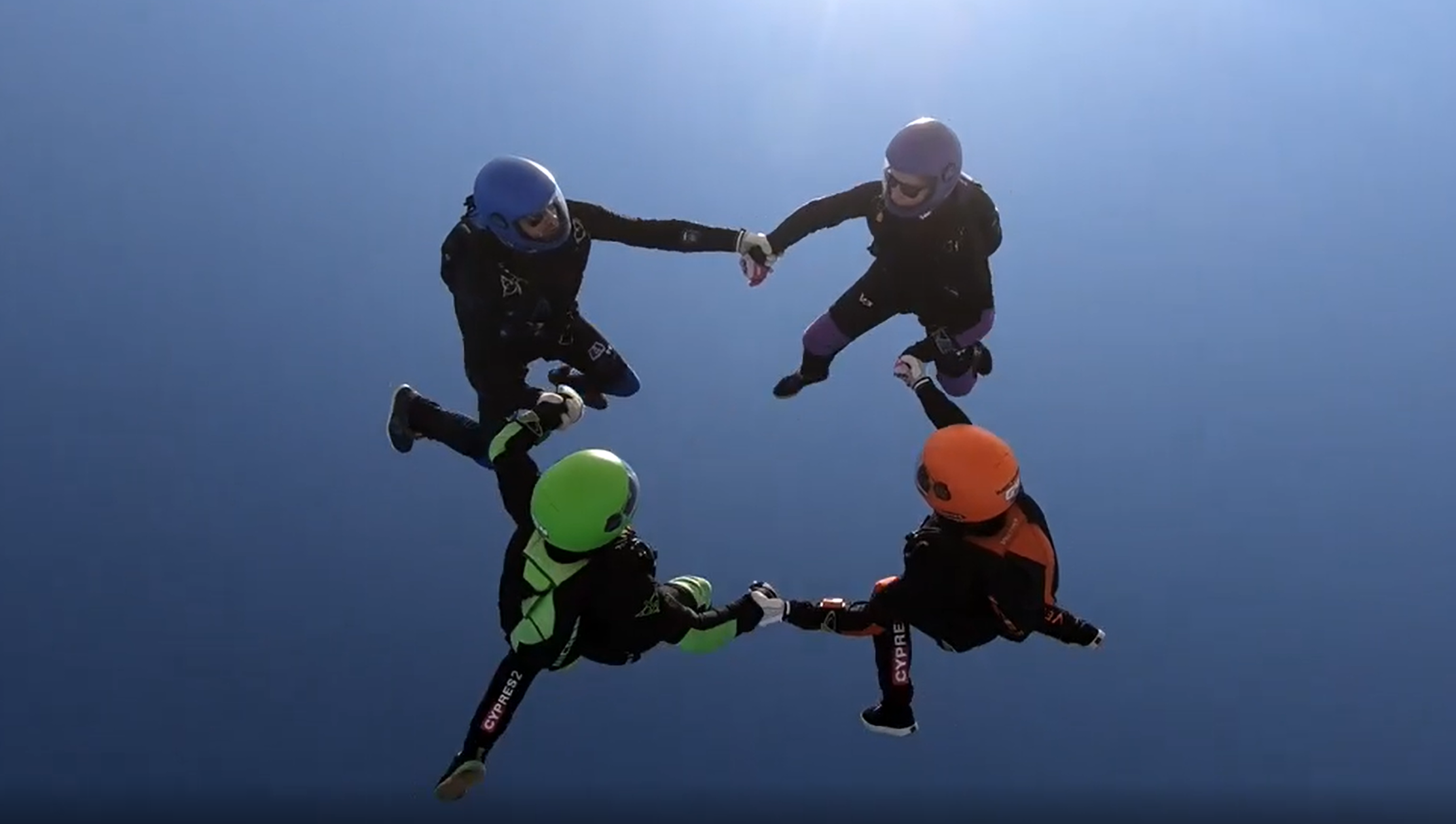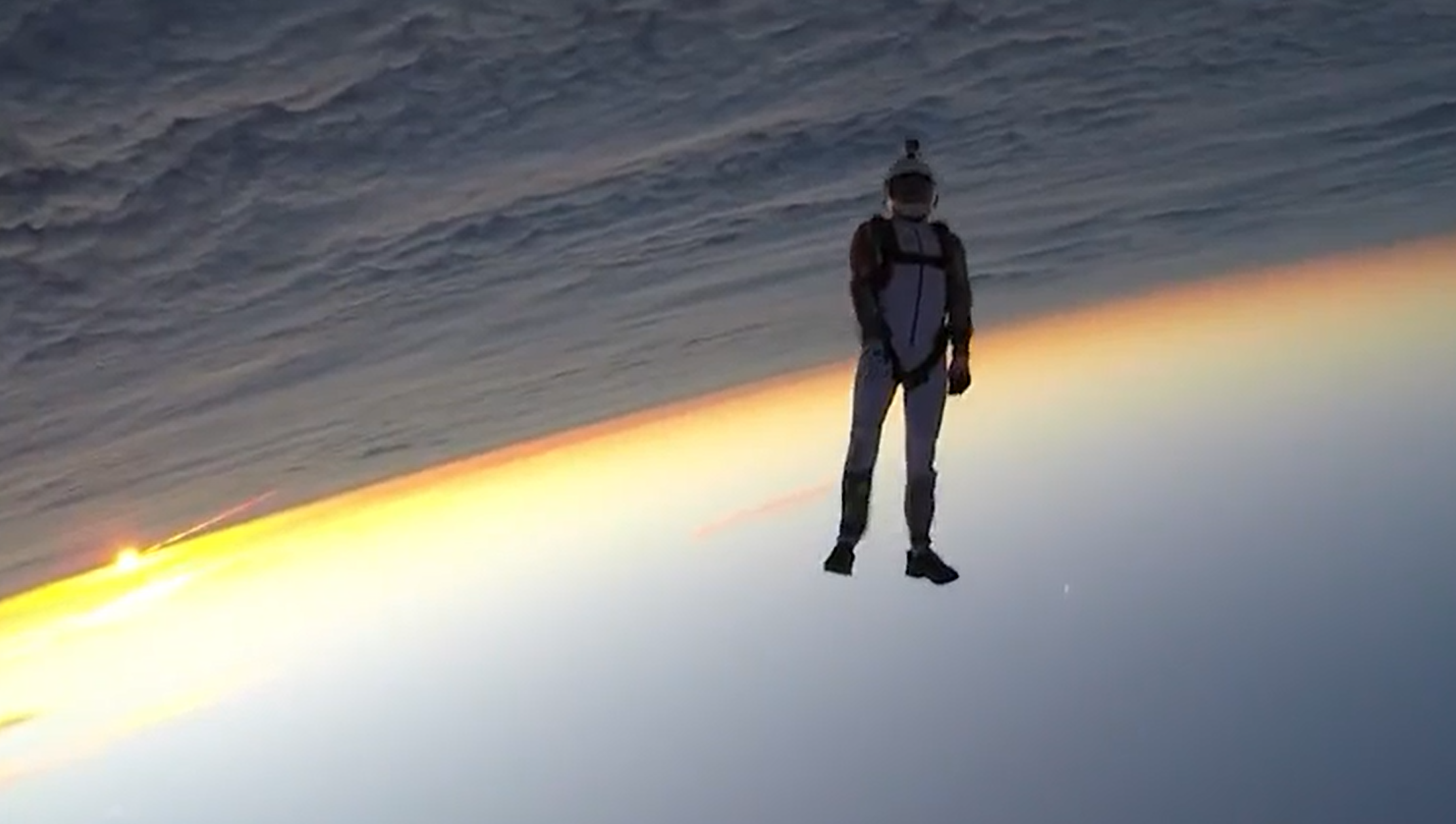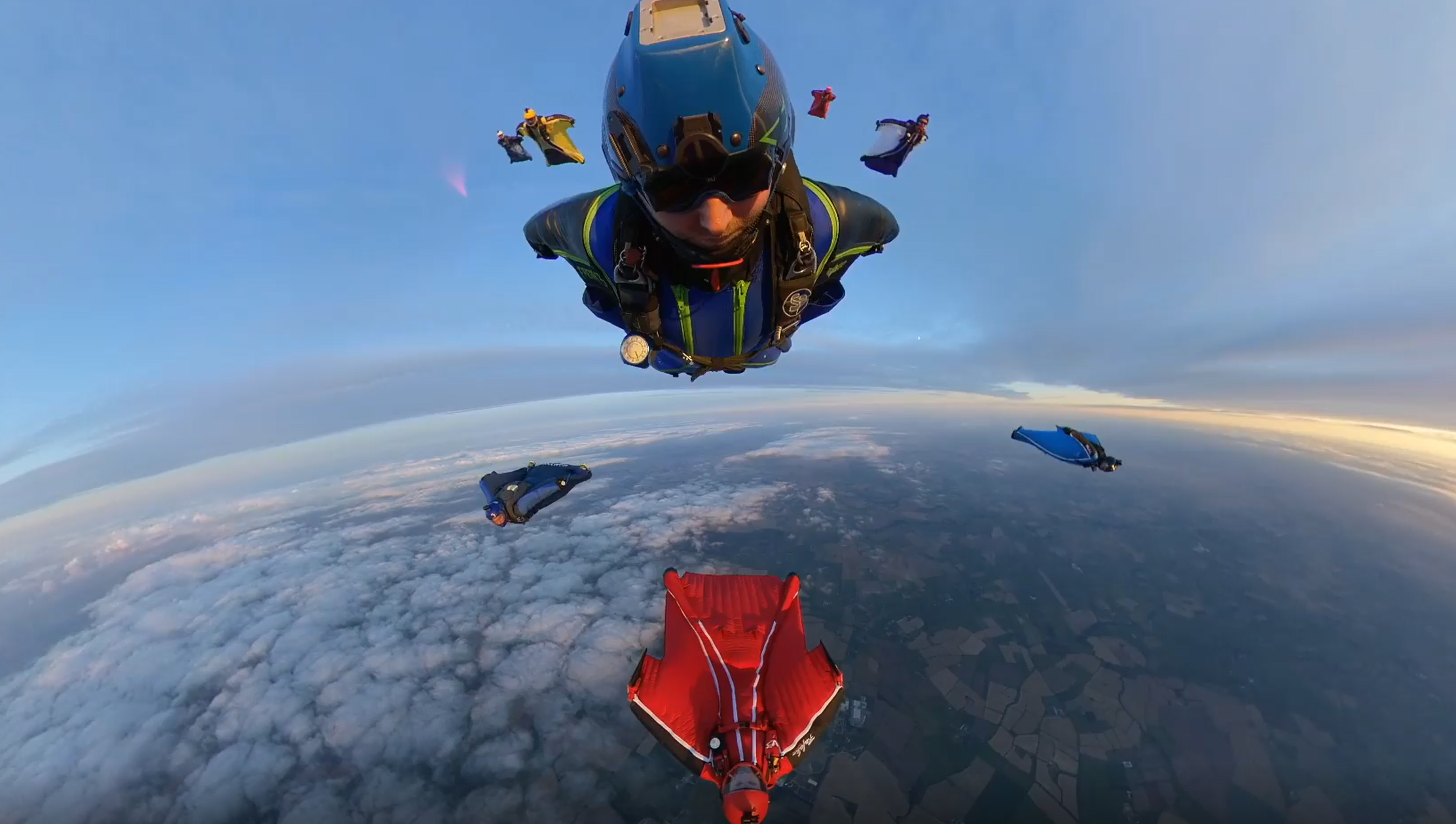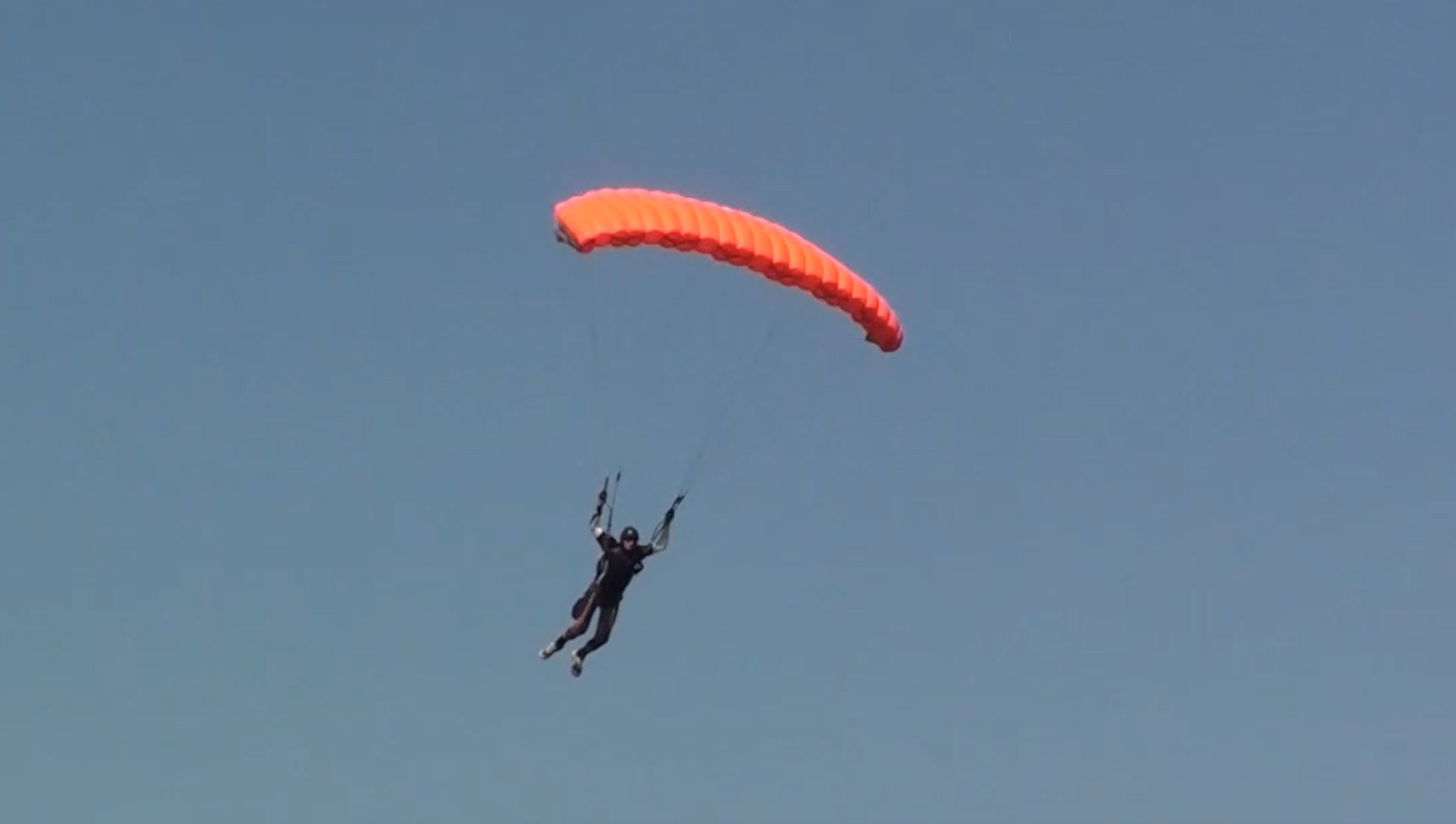Formation Skydiving (FS)
Once you have gained FS1 you are free to jump with other qualified individuals as you wish, both in the UK and abroad. FS formations can be be made up of any number of skydivers from 2 to 20+. If you get the FS bug you can enter competitions:
4-Way competition
Teams of five (four, plus a camera jumper) leave the plane at 10,500ft and are scored on the number of set formations they achieve in 35 seconds. The formations are drawn from a set pool but can come up in any order.
8-Way competition
Teams are of eight people plus camera and leave from 13,000ft with 50 seconds of ‘working time’ within which they are scored. Having eight people to play with makes for interesting and varied formations with a few different permutations possible for the same dive.
Requirements to begin training: British Skydiving A-Licence / Further info: Operations Manual Sec 2: 6.3
Video: NFTO – Filmed by Simon Brentford.
Freeflying (FF)
In Freeflying, skydivers express and display their individuality in freefall. Freefly jumpers perform solo aerial gymnastics, not easy in wind speeds of 120mph!
In Freefly competitions, competitors jump as a team of two plus a camera flyer and show a choreographed sequence usually involving head-down flying, stand-ups (crucifix position) and sit flying, as if in a chair.
Requirements to begin training: British Skydiving A-Licence / Further info: Operations Manual Sec 2: 6.6
Video: Perpendicular Chickens – Filmed by Emily Aucutt.
Accuracy
Jumping from around 3,000 feet, competitors attempt to land on a 2cm disc situated on an electronic recording surface. Distance from the disc is measured in centimetres up to 16cm. The aggregate distance over a number of rounds denotes placement with the lowest total distance placed first.
This is the oldest of the competitive disciplines, where parachute development has enabled competitors to achieve greater accuracy. In the early 1990s the disc was 10cm in diameter. The diameter of the disc has decreased considerably since then – today’s top competitors train and compete with a 2cm disc.
Requirements to begin training: British Skydiving A-Licence
Video: Accuracy Grand Prix 2021 – Filmed by Dave Crowhurst.
Tracking (TR)
Although tracking is a basic freefall skill designed to provide safe horizontal separation from other jumpers at break off. It is also a recognised discipline in its own right.
The tracking position is different to the traditional face-to-earth & arched position, straightening the legs, bringing the arms to the sides and de-arching creates lift to change the glide ratio.
Good trackers with a glide ration approaching 1:1 can cover nearly as much ground as the distance they fall.
Requirements to begin training: British Skydiving B-Licence / Further info: Operations Manual Sec 2: 6.9
Video: Multi-Way Track – Filmed by James Moran.
Canopy Formation Skydiving (CF)
This team event involves 2, 4 or 8 team members linking their parachutes together to form predetermined formations as many times as possible within a set time.
Canopy Formation is about ‘precision collisions’ between team members’ main parachutes. Teams leave the aircraft, open their parachutes and then link them together. It is possible to build many different canopy formations in sequence. There are three main types of Canopy Formation events: rotations, sequential, and speed. Teams demonstrate the ability to combine precision control, consistency, a delicate touch and mental engineering of the entire dive with brute force and speed. The idea is simple, but it’s a challenging skill to master.
Requirements to begin training: British Skydiving B-Licence / Further info: Operations Manual Sec 2: 6.4
Video: VelociWraptors – Filmed by Charlie Wakeham.
Artistics
Artistics (which refers to freeflying, freestyle, skysurfing and angle flying) is a fun, creative and innovative area of the sport. It evolved from a desire to enjoy exploring the almost limitless ways to fly your body in freefall.
Freestyle
Freestyle is a form of aerial gymnastics where the emphasis is on elegant moves and aesthetic beauty, Men and women compete alongside each other in the same category. They jump with a camera flyer, who adds to the visual image by flying a routine with the performer. There are compulsory moves and free rounds, similar to figure skating, and judges mark specific areas such as technical merit, fluidity, style and originality.
Requirements to begin training: British Skydiving A-Licence & FF1 / Further info: Operations Manual Sec 2: 6.6
Video: NOVA – Filmed by Chris Mayhew.
Vertical Formation Skydiving (VFS)
In VFS jumpers perform set formations just as in Formation Skydiving but instead of flying belly-to-earth the skydivers alternate between head-down and head-up.
VFS is a much harder discipline to master than FS and has its roots in Freeflying.
Requirements to begin training: British Skydiving A-Licence & FF2 / Further info: Operations Manual Sec 2: 6.6
Video: Omni 99 – Filmed by Dan Guest.
Speed
The goal for speed skydivers is to achieve and maintain the highest possible terminal velocity. It is the fastest non-motorised sport on Earth.
Speed Skydivers minimise drag by streamlining the body allowing for speeds of around 500 km/h.
Requirements to begin training: British Skydiving A-Licence
Video: Mikey Lovemore.
Wingsuiting (WS)
Wingsuits, when flown correctly, greatly reduce your vertical speed in exchange for horizontal speed. The WS1 qualification covers the skills needed to safely exit, fly and deploy in a wingsuit, as well as understanding the extra flight planning that is needed due to the horizontal distance that will be covered.
After WS1 you can learn the skills needed to jump with other wingsuiters, including diving down to a target, increasing and decreasing forward speed, sideways movement and recovery from instability. WS2 is the proof that you have accomplished these skills to a level where you may safely plan wingsuit jumps with others.
Requirements to begin training: British Skydiving C-Licence + TR1 + 200 skydives within last 18 months or 500 jumps in total / Further info: Operations Manual Sec 2: 6.8
Video: Angry Birds Big Suit Event – Filmed by Shaun Crockford.
Canopy Piloting (CP)
Still a relatively new discipline, canopy piloting is one of the most exhilarating, technically demanding and spectator-friendly types of skydiving. Skydivers use high-performance canopy’s that are much smaller and quicker. Progression to this level can take many years and involves thousands of jumps.
Canopy piloting competitions typically comprise a number of different courses – such as speed, distance and accuracy – that challenge various performance characteristics of canopy flight and pilot skill.
Requirements to begin CT3 training: British Skydiving C Licence + CT1 + CT2 + 300 Skydives / Further info: Operations Manual Sec 2: 6.2.9
Video: Martin Reynolds
RISE TO A NEW CHALLENGE!
Want to take the next step and begin your journey to new heights?
There are 26 affiliated Parachute Training Organisations in the UK for you to choose from. All of them follow the same safety standards so wherever you jump and whatever training method you choose, you can rest assured that an exhilarating experience awaits.
